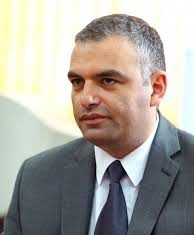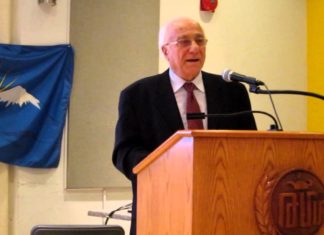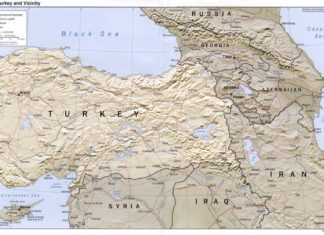By Hagop Avedikian
In November 2010, a discussion and presentation of Haikakan Banak (Armenian Army), a defense- academic journal, took place at the Ministry of Defense of the Republic of Armenia (MOD, RA). The discussion was held with the participation of an outstanding array of political, social scientists and historians. The Appendix, titled “Activity of the US-Armenian Lobbies in Terms of the RA National Security Strategic Interests,” and subtitled “Guidelines of the RADiaspora Dialogue Strategy,” was supervised by the commandant of the Institute for National Strategic Studies, MOD, RA, Gen. Hayk Kotanjian and edited by A. Avagyan, B. Poghosyan and V. Ter-Matevosyan.
The 240-page appendix is in fact a collection of valuable studies, to which a group of experts from Armenia and the diaspora have contributed. Ter- Matevosyan has given his strategic assessments on Armenia-Diaspora issues, P. Chobanyan has discussed the problem of synthesizing the orthographic systems of the Armenian language in terms of the Republic of Armenia national security, H. Hovhannisyan has raised the matter of the unity of the Armenian Church with a view to the security of the diaspora, while A. Manvelyan has tried to suggest solutions to Armenia-Diaspora pluralism and equilibrium based on the example of the Armenian Ramgavar Azadagan Democratic Liberal Party. A. Yeganyan has disclosed the cooperation prospects of the Armenian and US Armenian lobbies, and B. Poghosyan and A. Avagyan in separate articles have considered the experience and potential of the US-Jewish lobby from the perspective of Israel’s security and, contiguously, creating similar potential serving the Pan-Armenian interests.
The two policy articles of the collection have examined the organization model of the Jewish lobby and, more broadly, of the Jewish Diaspora and the possibility of implementing it in the Armenian reality. One of them belongs to Kotanjian (“Guidelines of the RA-Diaspora Dialogue Strategy”), and the author of the second one is the renowned Orientalist and political scientist, Prof. Nikolay Hovhannisyan (“Strategic Guidelines of the Armenia-Diaspora Integration: Conceptual Approaches”).
The articles of three experts from the diaspora, Julien Zarifian, Asbed Kotchikian and Stephan Astourian are also included in the collection where it is mentioned that the authors’ viewpoint not always coincides with that of the editorial staff. The first two articles almost exhaustively cover the origin, structure and activity methodology of the US-Armenian lobby, while the third touches upon the prospects of coordinating the Armenian Government’s activities with the political parties of the Diaspora.
Thanks to the collection under review, we deal with serious contributions written academically and professionally which also scrutinize practical issues theoretically. For the most part, the articles’ theoretical discussions cover mainly the US Armenian community, as well as the activity of US-Jewish or Israeli lobby. As concerns the practical goals, they are clearly expounded both in H. Kotanjian’s and Hovhannisyan’s articles. At the end of the volume proposals are submitted to the Republic of Armenia president, the government as well as the Ministries of Diaspora and Foreign Affairs.









